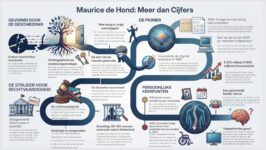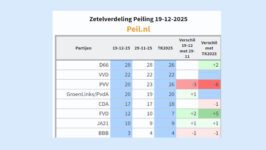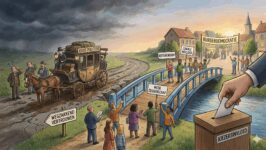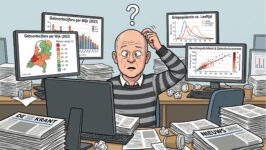Once again, tonight's announcement demonstrates that the recent studies on the spread of COVID-19 are being ignored by the advisors at best. Fear is being stoked while the risk of a repetition of March - at least until the fall - is all but zero. This article asks 8 of the most crucial questions that our experts are not being asked.
Lees volledig artikel: Sailing in the fog, with old maps and a broken rudder
Sailing in the fog, with old maps and a broken rudder
In recent weeks, several very important studies about the spread of COVID-19 have come to light. With these in hand, it would be quite possible to develop a smart and fast exit strategy. Without the danger of a rapid increase in the number of seriously ill people and casualties.
Tonight’s government announcements show, that these recent investigations are at least being ignored (and I say this kindly) by the Dutch team of advisors. The fear of a second wave is being stirred up, giving the citizens the impression that we will be back in the situation of 1,400 people in ICUs in no time. That chance is -at least until the autumn- nil.
Yes, there is a chance that we will go to 10 or 20 more deaths a day, but that is mainly due to the blind spot at the OMT and government, for other ways of contamination than within 1.5 meter distance. But even that doesn’t justify the kind of frightening “threat of a second wave” that we get sprinkled over us every night like a mantra by virologists and administrators.
Exit strategy
A smart and fast exit strategy, taking into account the latest research results, would be much better for the economy and society, while the chances of increasing the number of casualties are even smaller than the approach being followed now.
It is an approach that is not based on a 1.5-metre society. That too has become a kind of mantra. In many places this is practically, economically and socially unfeasible, besides creating a false sense of security.
I wonder why the crucial results of Prof. Streeck’s special research, just across the border in Germany, as explained in an extensive interview on Monday evening in the ZDF newscast Heute, are virtually ignored in the Dutch media yesterday and today?
The following example shows how many people are sailing in the fog and how weak the basis for decision making is now and in the near future. In the coming weeks, the measures will be lifted a bit: primary schools will be half-open, contact professions will be allowed to get back to work, certain sports activities will be allowed again (e.g. at Golf we now apparently get “a hole in one and a half”) and we are allowed to stay at home a little less.
Badly organized
Let’s just presume, that one of these is not working as well as it should and infections rise. That will surface in two weeks or so. But if you just see how badly organized the research into contamination is in the Netherlands (professional data collection appears to be difficult for our government), then you already know what happens: they will not be able to clearly attribute the increase to one of those extensions.
Perhaps it is caused by another development, which they did not focused on (such as an increase in the use of air-conditioning in houses, because the temperature is rising outside)? What does one do then? Reverse everything? Or postpone the next phase a bit?
How can you steer well under difficult circumstances, when so much crucial data is missing? And journalists do not ask our specialists the right e.g. crucial questions?
Like:
- you keep saying that there’s a high chance of infection if you come into contact with an infected person within 1.5 meters. But how can it be that in Germany, just as in China and South Korea, it has been demonstrated that the vast majority of family members of an infected person are not infected themselves?
- How is it possible that two months after the start of this crisis you still do not know which part of the Dutch population is infected? How can you then formulate policy?
- Why are there so few infections in the province of Groningen and so many in Brabant/Limburg? Are the chances of being infected greater in Groningen now, or smaller in Brabant?
- What is the consequence of the fact that it has now also been established in Germany that 22% of infected persons have no symptoms?
- How is it possible that those attending a superspreading event have much more serious symptoms than people who are infected at home? And how is it possible that people who are infected at home have noticed much less of their infection than people at a superspreading event?
- What are the consequences of the findings in studies in different countries that it is hardly possible to be infected outdoors?
- What conclusions do you draw from the findings in the US that indoor temperature and humidity need to be raised?
- Last but not least, what have you actually learned about the spread of the virus since it broke out in China 4 months ago?
I’m afraid the answers to these questions support my thesis, “we sail in the fog, with old maps and a broken rudder”.
Sailing in the fog, with old maps and a broken rudder.
Volg Maurice de Hond op Twitter | Facebook | LinkedIn | YouTube.







